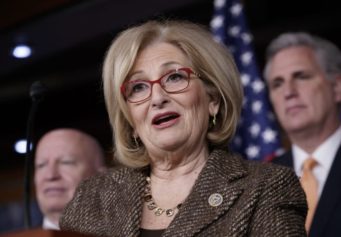Is the dream of a comfortable retirement dashed for aging baby boomers and younger generations? It sure seems that way after looking at the study released by the Employee Benefits Research Institute on March 19.
The Washington (D.C.) think tank’s 23rd Retirement Confidence Survey reports nearly half of workers surveyed have little to no confidence they’ve saved enough for a decent retirement. Among those surveyed who provided financial data, 57 percent say the value of their household savings is less than $25,000 (excluding the value of their home and any traditional defined benefit pension plan).
“Retirement worry is highest in 23 years,” said USA Today; “Workers Saving Too Little to Retire,” the Wall Street Journal said; “Americans more downbeat than ever about retirement, study says,” the Los Angeles Times reported; and “Most Workers Have Less Than $25,000 For Retirement,” wrote Financial Advisors Magazine.
Really? Is this where the average American worker finds himself—busted, broke, financially ill-prepared for old age? It’s a depressing thought for a number of reasons, considering all the media devoted to retirement planning, strategies for managing 401(k)s and IRAs, and planning tips for old age. Sure, the information is often overwhelming. Still, the message from the boom in retirement stories is unmistakable: Save for old age. Is the American employee that myopic?
Simply put, no. There are many things to worry about in the American economy, but the gloom runs far too deep when it comes to aging and retirement. For one thing, the U.S. economy is only now leaving behind the worst downturn since the 1930s. The EBRI survey captures the mood following the financial trauma of the Great Recession and Anemic Recovery.
The finances of an aging population should improve in coming years with the revival of the stock market, housing market, and labor market. For another, for workers in their 50s, now that the kids are out of the house (hopefully) and retirement is less distant (where did the time go?), more will focus on saving for retirement.
Many scholarly studies that take a comprehensive look at the finances of an aging population are less pessimistic. These studies view household finances as a pyramid (to borrow a metaphor from an Investment Company Institute study, “The Success of the U.S. Retirement System”). The components of the pyramid are Social Security, homeownership, employer-sponsored retirement plans (private-sector and government employer plans), as well as traditional defined benefit plans and defined contribution plans, such as a 401(k); IRAs and other savings, from bank deposits to cars.
The kicker to “Are All Americas Saving ‘Optimally’ for Retirement?” a 2009 study by John Karl Scholz and Anath Seshadri, economists at the University of Wisconsin-Madison and William Gale, economist at the Brookings Institution, nicely captures the overall sentiment: “But we see little in the descriptive data or our model-based analyses that leads us to think that households are making large, systematic errors in their financial preparation for retirement.”
I would add that most of those with a shortfall will work a few years more, probably part time, perhaps as a contract worker. Putting in additional time earning an income is hardly an unrealistic expectation for many aging boomers, considering today’s 65-year-old is comparable in health and mortality to a 54-year-old in 1947, according to John Shoven, economist at Stanford University. The catchphrase, “65 is the new 55,” isn’t just a hopeful baby boomer bumper sticker.
Read More: businessweek.com


